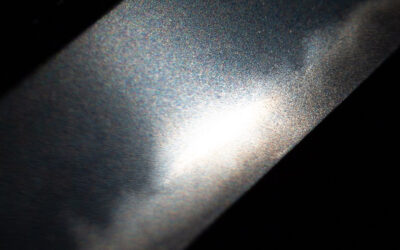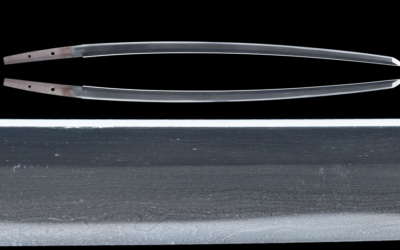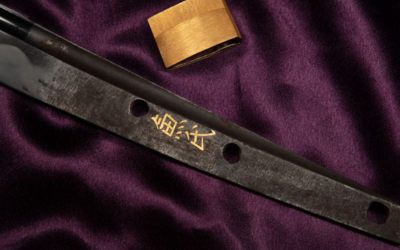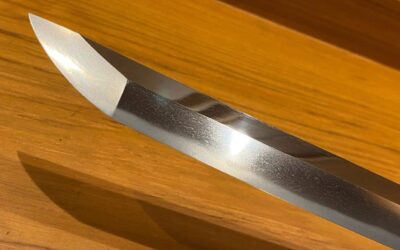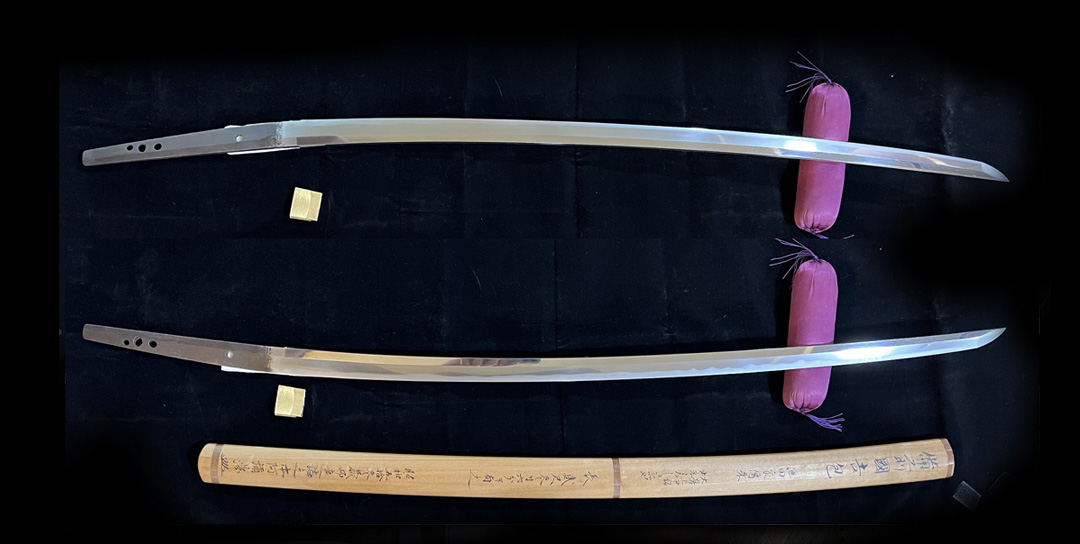
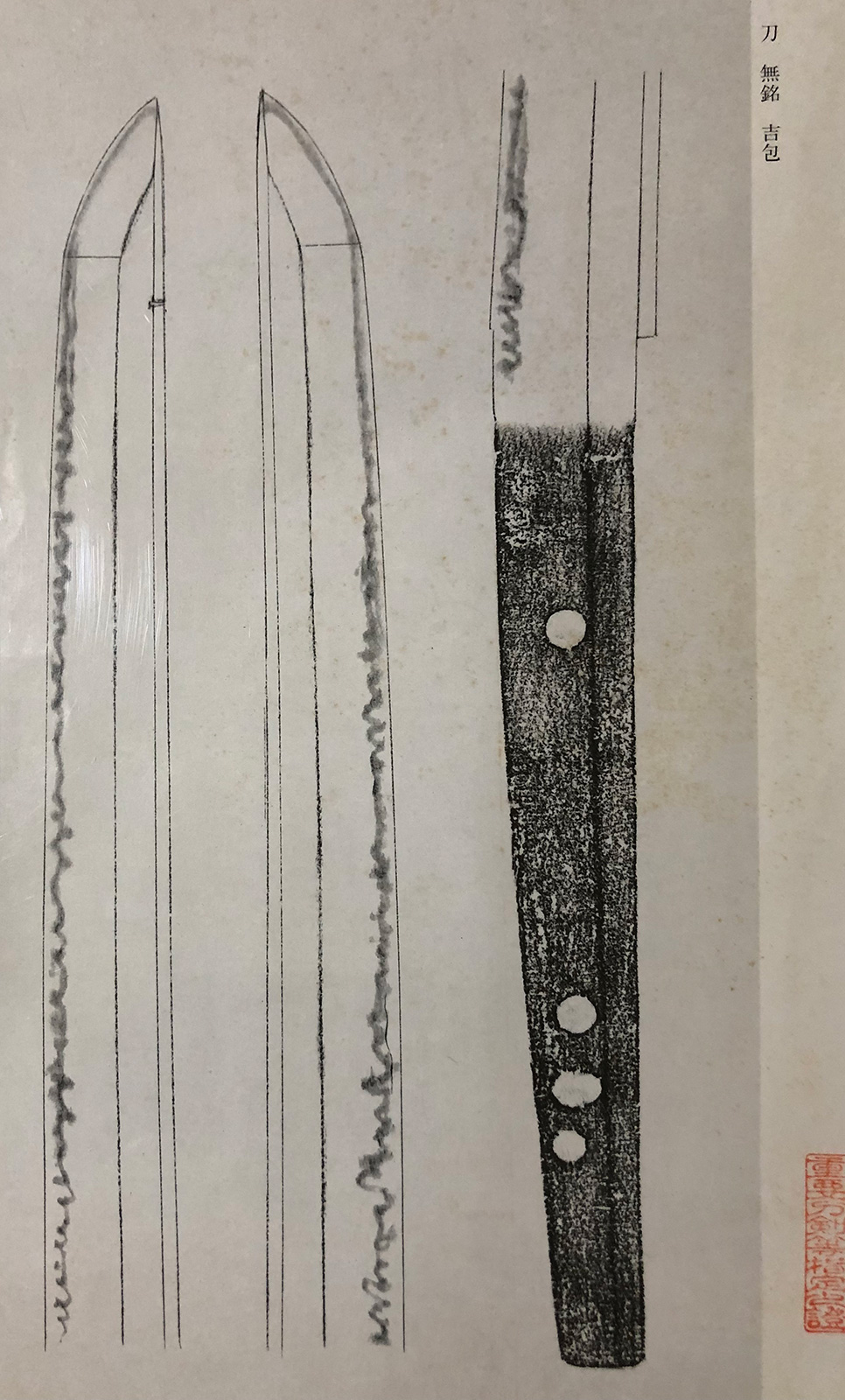
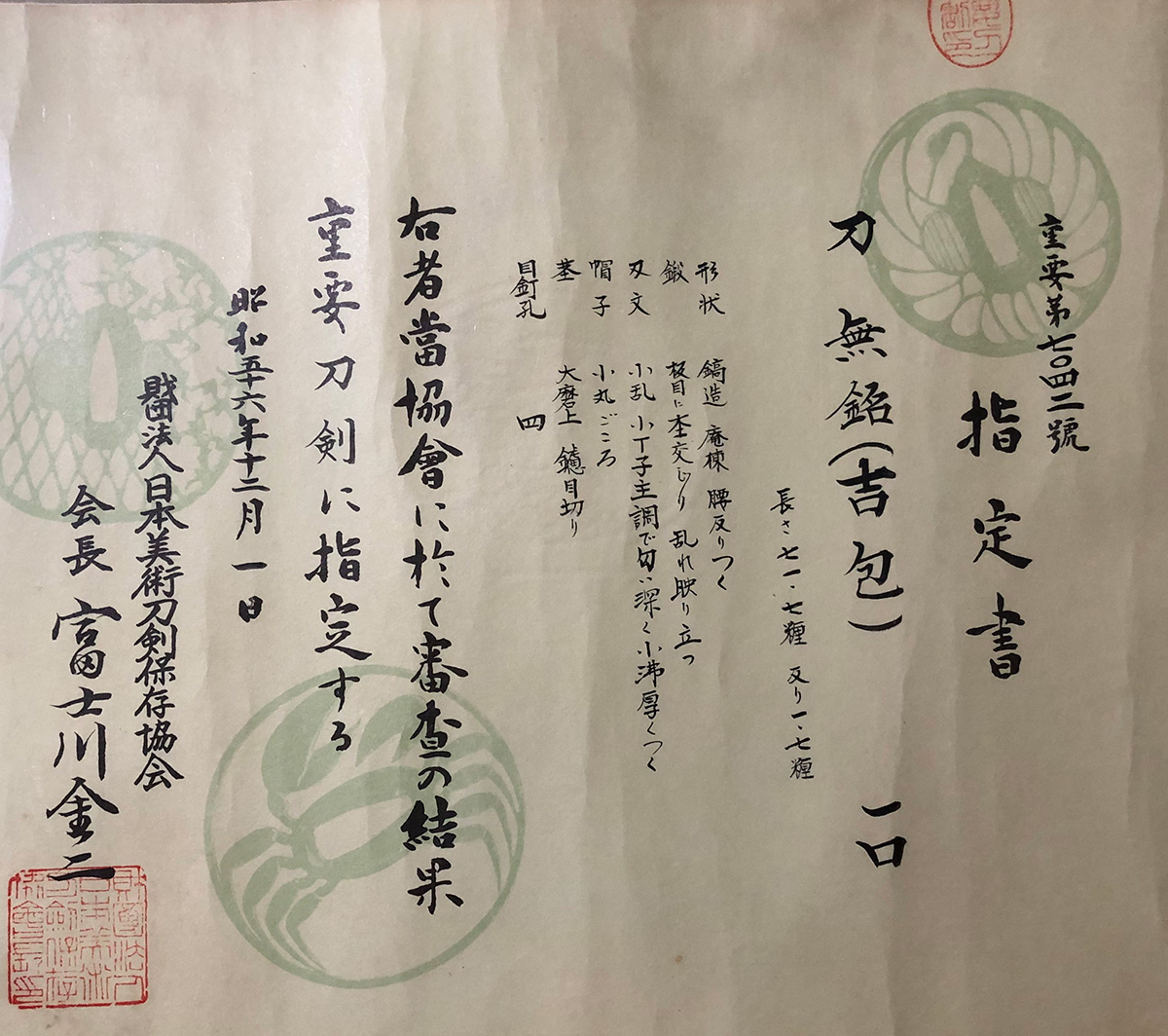
Project Info
Project Description
Jūyō Tōken Katana – Attributed to Ko-Bizen Yoshikane
Kamakura Period, 13th Century | Mumei, Ō-suriage | 28th Jūyō Tōken, 1981
This katana, attributed to Ko-Bizen Yoshikane, represents a rare and exceptional example of early Kamakura-period Bizen workmanship—formally designated as an Important Sword (Jūyō Tōken) at the 28th NBTHK session in Shōwa 56 (1981).
Though unsigned and greatly shortened (ō-suriage), the sword retains an elegant and well-proportioned silhouette, with a graceful koshi-zori curvature and a refined chū-kissaki, evoking the dynamic profile typical of 13th-century Bizen tradition. The blade measures 71.7 cm in nagasa with a curvature of 1.7 cm, preserving the balance and visual rhythm for which early Kamakura blades are prized.
The jigane is beautifully forged in a flowing itame-hada with visible mokume blending softly into the surface, with an even and fine ji-nie overlay. A subtle yet discernible midare-utsuri rises across the ji, a hallmark of Bizen steel that testifies to both the quality of material and mastery of construction.
The hamon is a richly nuanced composition of ko-midare and ko-chōji, deeply rooted in a well-defined nioi-guchi. The activity within the hamon is considerable—featuring sunagashi and streaks of kinsuji that lend a sense of vitality across the length of the blade. Particularly noteworthy is the contrast between the omote, where the pattern appears delicately restrained, and the ura, where more expressive forms such as fukuro-chōji and kaeruko-chōji emerge, offering a subtle yet sophisticated variation in temperament.
The bōshi is finished in a classic ko-maru style, turning back neatly without erratic movement, further reinforcing the sword’s dignified character. The nakago, though significantly shortened, preserves clean horizontal file marks (kiri yasurime), with four mekugi-ana and a plain kiri-jiri end. The blade remains unsigned (mumei), consistent with major shortening common to blades of this period.
Historical Context
Yoshikane was a smith of the Ko-Bizen school, one of the foundational lineages of Japanese swordmaking. Although the school’s origins stretch into the Heian period, it flourished during the early Kamakura, producing swords that embodied the emerging ideals of form and function favored by the rising warrior class. Several generations of smiths worked under the name Yoshikane, and some dated examples survive from the Kenchō era (1249–1256), exhibiting wide mihaba and bold midare hamon with prominent nie—characteristics echoed in the present blade.
The Ko-Bizen smiths are noted for refining Bizen’s core aesthetic language: calm curvature, graceful surface activity, and an emphasis on balanced hamon forms influenced by earlier Sanjo and Ko-Aoe traditions. While much of Ko-Bizen’s history is difficult to fully document due to unsigned works and limited surviving examples, swords attributed to this group—particularly those of this caliber—are treasured for their rarity and importance in the evolutionary history of Japanese swordsmithing.
Certification
This blade was officially designated Jūyō Tōken by the NBTHK in 1981 (Shōwa 56), under entry for the 28th Jūyō Shinsa. The authentication confirms not only the exceptional quality and preservation of the blade, but also its historical importance within the corpus of Kamakura-period Bizen works.
Ko-Bizen Yoshikane
Designated December 1, Shōwa 56 (1981)
28th Jūyō Tōken (Important Sword) Designation
Katana – Mumei (Unsigned), Attributed to Yoshikane
One piece
Owner: Yukihito Tasaka, Okayama Prefecture
Measurements:
-
Length: 71.7 cm
-
Curvature (sori): 1.7 cm
-
Moto-haba (width at base): approx. 2.7 cm
-
Saki-haba (width at yokote): approx. 1.7 cm
-
Kissaki (point length): approx. 3.1 cm
-
Nakago (tang length): 19.7 cm
-
Nakago curvature: almost none
Shape:
Shinogi-zukuri, iori-mune.
Though greatly shortened (ō-suriage), it retains a waist curvature (koshi-zori) and has a medium-length kissaki (chū-kissaki).
Jitetsu (Forging):
Itame hada with some mokume mixed in. Fine ji-nie appears, with a faint midare utsuri standing out.
Hamon (Temper Line):
Composed mainly of small midare (small irregular pattern) and small chōji (clove-shaped elements), with a deeply nioi-based structure. Ko-nie is thick and well-applied. Sunagashi and kinsuji are present.
On the omote (front), the overall pattern is fine and small, while on the ura (reverse), elements such as fukuro-chōji (pouch-shaped clove) and kaeruko (frog-shaped chōji) appear.
Bōshi (Tip Tempering):
Ko-maru (small rounded turnback) style.
Nakago (Tang):
Heavily shortened (ō-suriage), tip is kiri (cut straight), yasurime are kiri (horizontal file marks), four mekugi-ana (peg holes), and unsigned (mumei).
Explanation:
Yoshikane is a smith from the Ko-Bizen school, and several generations bearing this name appear to have existed. Among the later examples, there are dated works from the Kenchō era (1249–1256, Kamakura period), which feature wide mihaba and a slightly flamboyant midare hamon with abundant nie—representing a well-defined and active style.
This sword, although unsigned and significantly shortened, is attributed to Yoshikane. The overall workmanship of both the forging and tempering is excellent.

